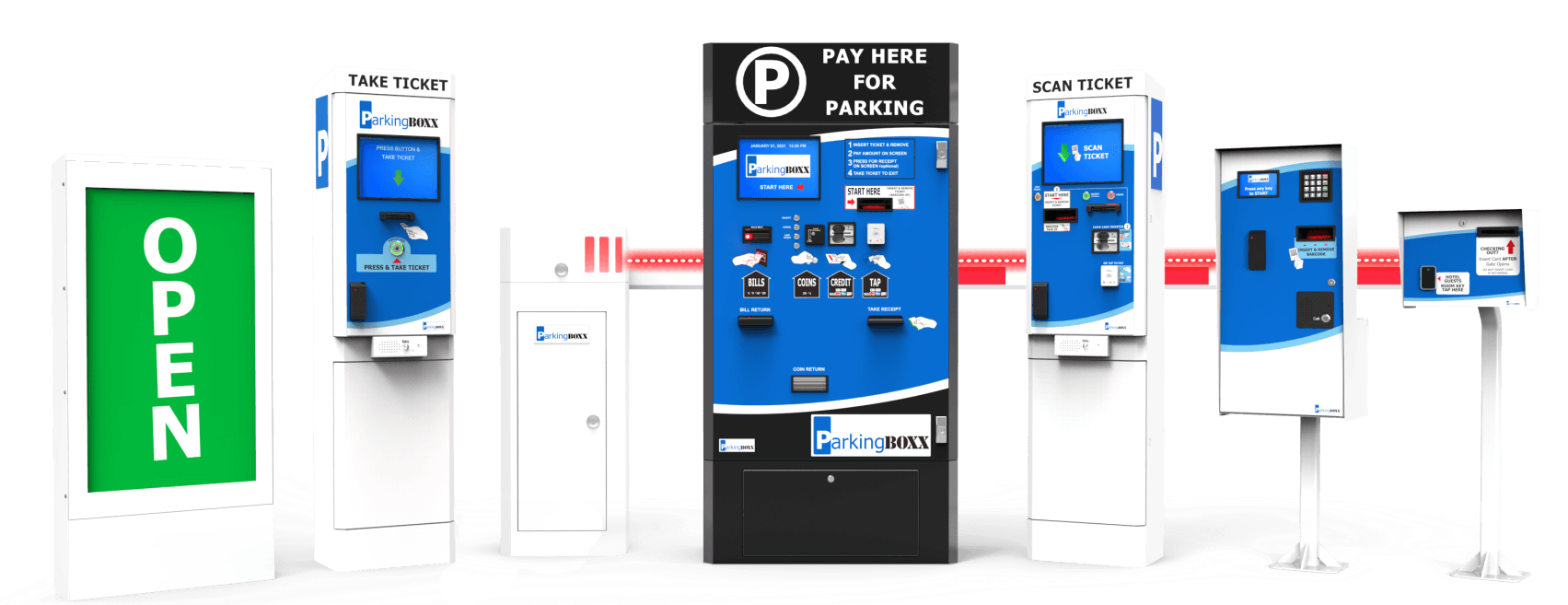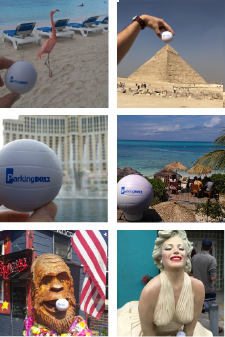The Definitive Guide to Parking Solutions
Everything You Need to Know About Parking Systems
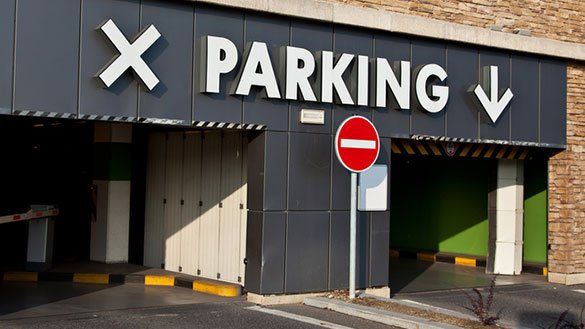
If you’re looking to upgrade your parking system, or need an entirely new parking solution, the good news is that options are extensive. Whatever your unique parking needs, you’ll find equipment, architecture, software and services to match.
Unfortunately, it can be difficult to navigate the options. Buyers want to quickly assess parking solutions and make an informed decision, without wading through industry jargon. That’s why we’ve created this ultimate guide. Consider it your one-stop source of information.
Here, you’ll find a clear, easy-to-follow overview of parking solutions, organized to help you find what you need to know, fast.
Designed for parking lot owners, this guide begins with one of your top priorities: how to effectively generate revenue. We start by outlining different approaches to collecting parking payments and managing variable rates; then we move on to methods for controlling access to your parking facility; and we wrap up with need-to-know facts on designing and managing a fully-effective parking system.
Parking Payment Solutions
There are many technologies for facilitating parking payments, whether via a cashier, a fully-automated self-serve system, or a hybrid attended/self-serve model. Here, we share essential information on parking payment solutions for each scenario.
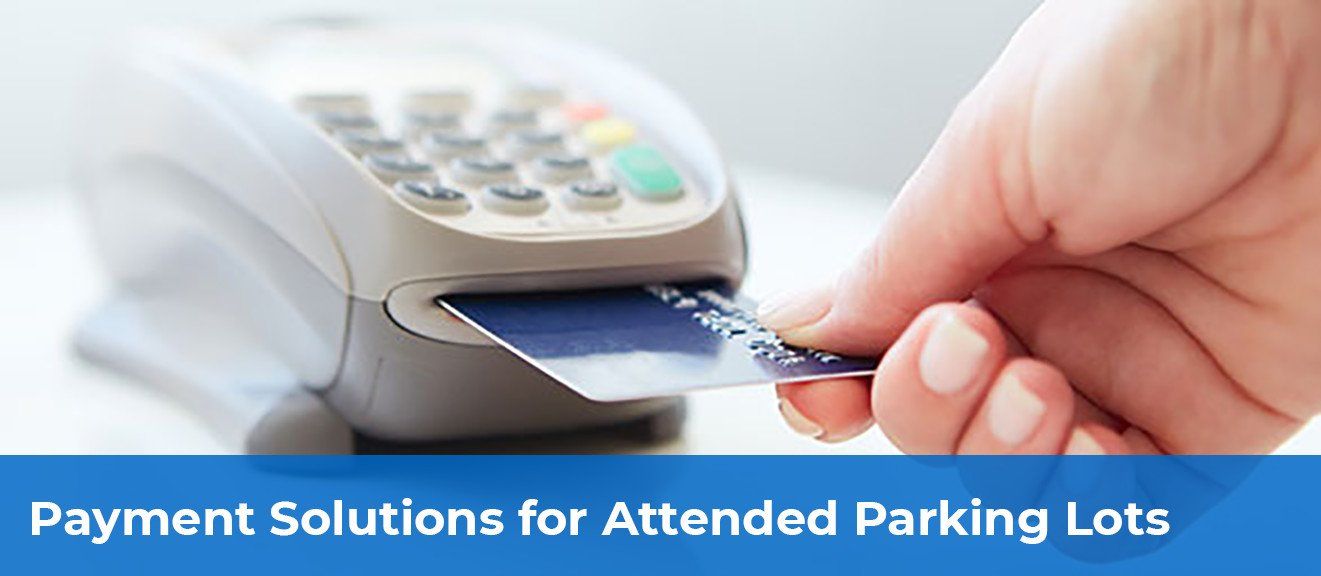
While technology has made it easy to run unattended parking lots, some facilities still prefer to have a person collect parking fees. The cashier may take payments, issue tickets, validate parking passes, and may also manually control entry or exit gates.
Attended parking lots can benefit significantly from automation. Ticket machines and automated barrier gates, for example, are a natural complement to an on-site cashier.
Here’s how automation works in a drive-up parking payment system, where the customer pays on exit:
- When the vehicle enters, the driver takes a ticket from a machine that generates sequentially issued ticket numbers.
- At exit, the customer approaches an integrated Point of Sale (POS) or cashier station, and presents the ticket.
- The ticket is scanned using a barcode or read via a magnetic stripe reader.
- The system generates the rate and the payment due is then displayed on the automated fee display.
- The barrier gate is integrated with the POS, so that when the ticket is paid, it triggers the automated barrier gate in the exit lane to open.
- All transactions are logged in an audit file to ensure full accountability for all tickets printed and payments made.
Alternatively, a cashier station may be situated at a walk-up location, rather than a drive-up laneway location. Upon payment, the parking ticket is updated as “paid” in the parking system. On exit, the customer scans their paid ticket to read the paid ticket, then the automatic barrier gate is opened.
Automated parking systems offer a simple, powerful parking solutions to account for and collect parking revenue. Full-featured parking systems offer many variations from Event Rate parking (paid on entry) to hourly rates with daily & weekly maximums as well as validations from a percentage discount to a dollar discount or a re-rate meaning that a different rate structure applies. All of the parking tickets issued, payments made, validations applied, are all integrated and consolidated into the parking management software that accommodates multiple fee structures.
Many parking lots blend attended and unattended service, by staffing the POS station during peak times and using fully-automated parking solutions during lower-volume periods. Read on for more information on parking self-serve options.
Self-serve parking management or automation is on the rise because it allows parking lot owners to save payroll costs and improve revenue collection. Automated parking solutions also reduce ‘revenue slippage’, or loss due to employee theft and error.
Ideally, these self-serve parking payment solutions are combined with gates, to secure access and revenue control. Self-serve parking payments for lots with gates fall into two categories: walk-up payment stations (a.k.a. pay-on-foot or POF), and drive-up payment stations (a.k.a. pay-on-exit or POE).
Self-Serve Walk-Up Payment Stations
In the walk-up payment model, the customer takes a ticket upon entering the lot and retains that ticket until the end of their parking session. Typically, the customer pays after the parking session and payment triggers the exit gate to open. The parking payment machine offers total revenue automation by accepting payment by credit/EMV, bills or coins and providing change via bills and coins. More economically priced walk-up parking machines may accept only payment by credit card/EMV chip or cash without change issued.
In the pay-on-exit system, customers use a parking ticket machine to obtain a ticket with a time stamp on entry. Some machines, including high-speed ticket machines, also allow users to scan a pre-paid pass, enter an access credential, or request a credit card encrypted token to start the parking session.
On exit, the customer scans the ticket. The parking machine then calculates the amount due and displays on the screen. Once the amount owing is paid the barrier gate arm will open and the parker may exit the parking lot.
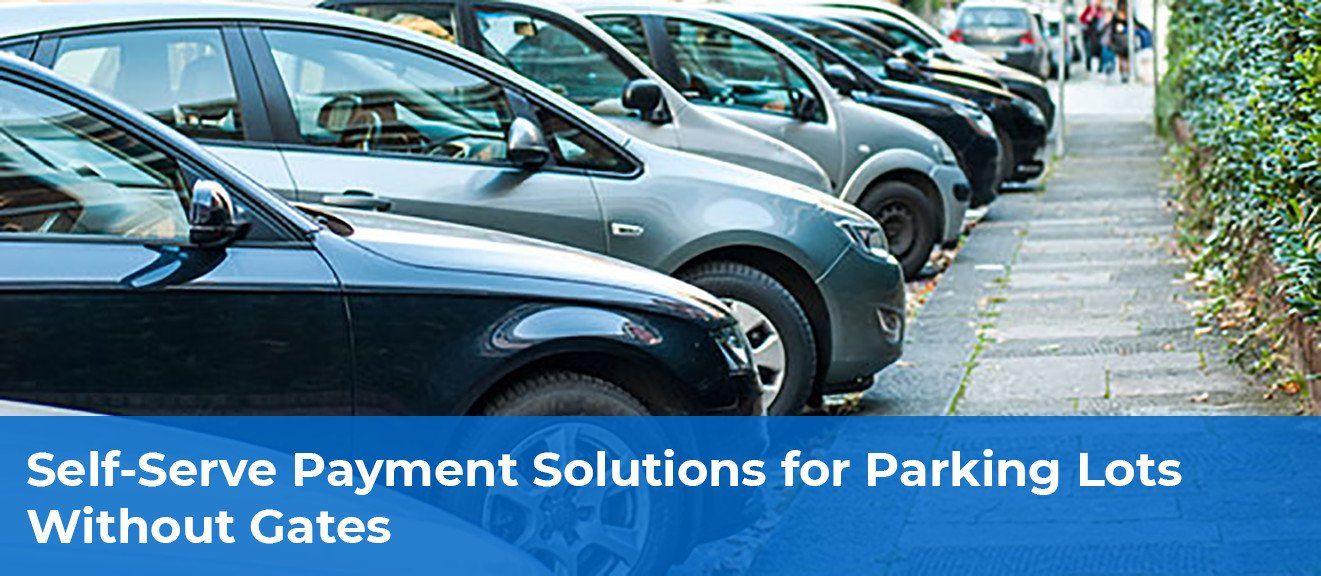
Some parking owners or operators choose a hybrid model, where payment is self-serve, and parking citations are issued for non-compliance. This is typically seen with ungated parking on streets or public lots, where municipal parking officers patrol.
The walk-up payment model works well here, and parking meters are the most familiar. Traditional meters are quite simple: the customer inserts coins and the meter displays the paid time remaining. Today, there are several other options. Pay-and-display meters allow customers to pay by credit or bank card and display the ticket on the dashboard. Other configurations can accommodate payment by parking space number or by license plate number.
Parking payment using your cell phone is a newer payment technology that allows customers to manage payments from their smart phones. A pay by phone parking app allows users to purchase or extend parking time online. Some parking technologies also include interactive voice response systems or allow for SMS to manage parking by phone, without using an app or wi-fi.
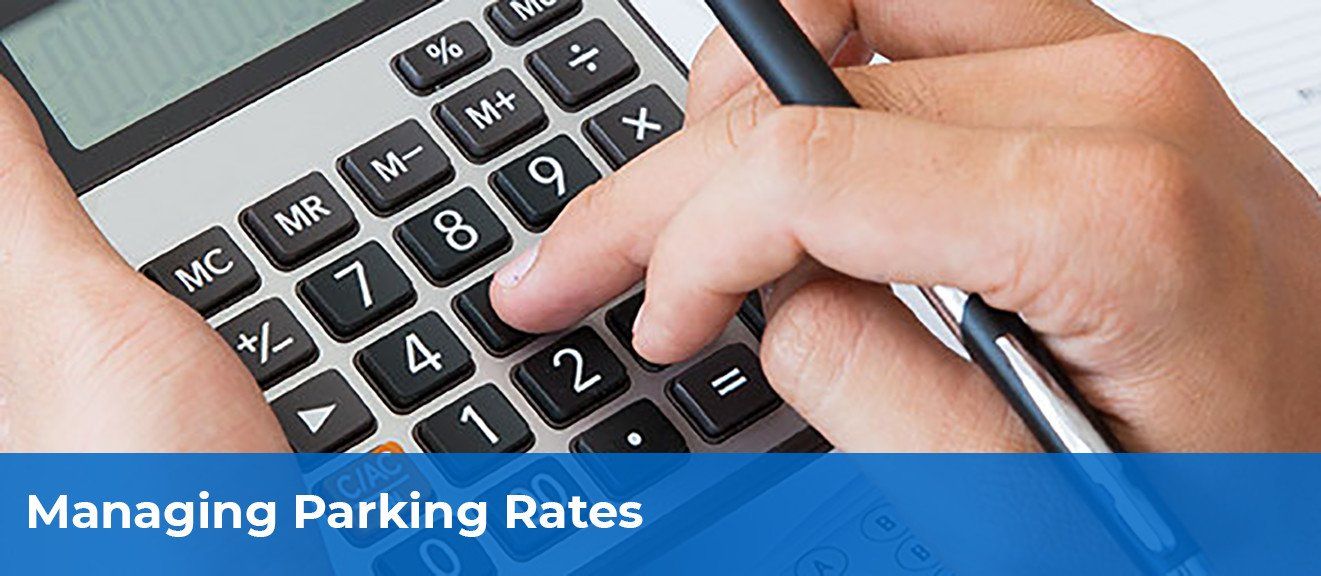
Managing parking rates is an essential part of your parking operation.
The first question is whether to adopt a full-featured parking management system, or choose the simpler flat rate approach.
Next, you’ll want to put in place technology for managing special rates for select parking customers. Read on to discover the options.
Full-Featured or Flat Rate Parking
Full-featured automated parking payment machines include sophisticated features to facilitate hourly parking rates.
Parking lot owners looking for lower-cost parking technologies can choose to charge a flat rate, which entails just one fee, no matter how long the parking session. Here’s how it works:
- Owners can charge a variable flat rate for different times of day (i.e. daytime versus evening parking);
- Alternatively, or additionally, choose to charge by day of the week (i.e. weekday or weekend parking).
- No parking ticket machine is needed to start the session, because the rate isn’t based on hourly duration.
- Customers can pay their flat rate at entry or exit
Flat rate parking can be suitable for a gated or ungated parking facility:
- In a gated scenario, if customers pay their flat rate at entry, the entry lane will be gated and the exit lane will be free.
- If the customer pays on exit, the single gate will be in the exit lane.
Many new parking facility owners or operators choose a flat rate model as a starting place. It’s ideal when you’re not quite sure how much revenue parking will generate. If you’re uncertain what the future holds, ask if the parking systems can be upgraded to a full-featured system.
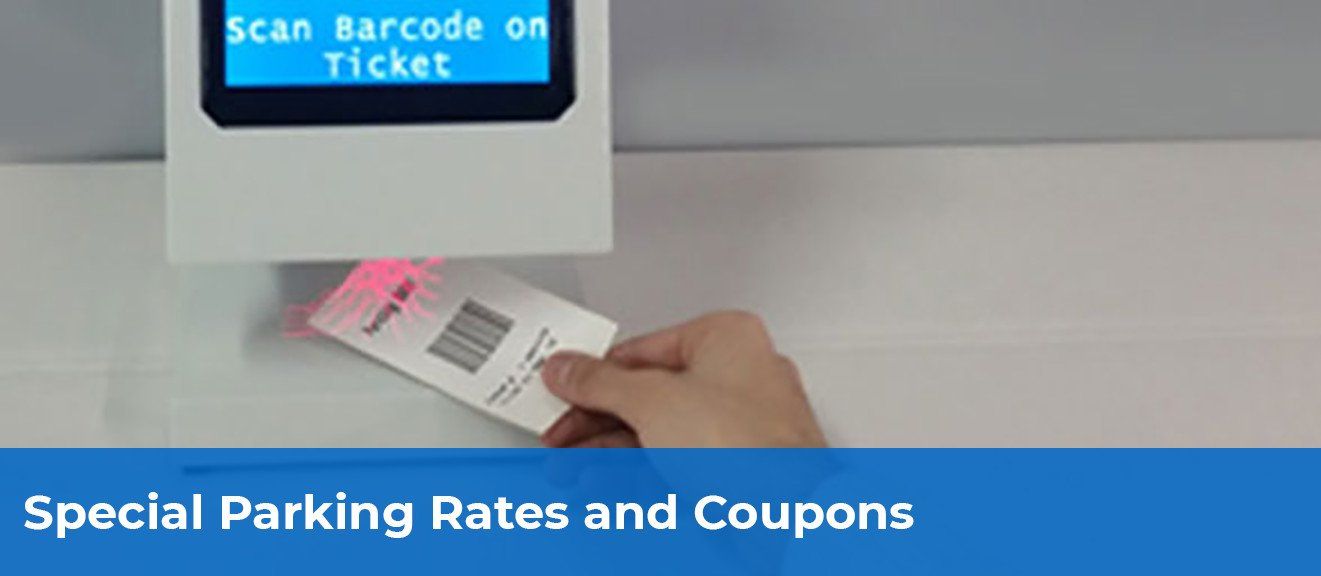
Discounted parking rates and coupons are often referred to as “validated parking”. The reduced rate or free parking is marked “valid” at the lot, hence the name.
Validated parking is offered to select parkers, in a lot where the general public must pay full-price for parking. Often retailers, hotels or professional services extend validated parking to customers, as a perk. Some parking lot owners sell printed parking validations (in the form of stickers or coupons) to merchants, tenants or partners.
Parking validation machines allow for real-time parking validation. Validation allows you to program discounts by dollar amount, percentage or time and create buttons for each type on the screen. Selecting the parking validation, then scanning the ticket takes seconds. The parking ticket is immediately validated, so that when the customer scans the ticket for payment or exit, the discount is automatically applied.
Controlling Parking Access
In the self-serve payment sections above, we describe how certain parking payment machines integrate with access and exit gates. Barrier gates are forms of parking access control equipment, but here we’ll also describe access control systems – the higher technology side of managing parking access for authorized users.
As owners intuitively appreciate, control over parking lot access means control over revenue and security. Sophisticated access control technologies and equipment allow you to restrict vehicle access to specific areas, track who has entered, exited, and when, all with advanced reporting capabilities. Read on to learn more.
Parking Access Control Systems
Access control systems are technologies that help parking facility owners manage parking by authorized users, such as employees or hotel guests. The essential elements are a) a parking access control devices, and b) software to manage and track access.
Parking access control machines, or access control pedestals , can be configured with a keypad, for code access, or with a credential reading device, to detect and validate a parker’s card or tag for the date, time and location. Some payment machines can be upgraded to include a credential reader in lieu of a stand-alone access control machine.
Short-range credential readers must be presented by the parker at the access control machine, whereas long-range readers can pick up an authorized windshield tag or licence plate tag automatically within a certain range.
The access control machine is integrated with a parking management system, like our EASE software, which allows parking facility operators to manage credentialed access from the back-end. When the system ‘approves’ a credential, a signal can be sent automatically to open the access barrier. The software tracks all access and exit data, to give parking operators full visibility into the movements of authorized users into and out of the parking facility.
In parking facilities with mixed public parking and card-access parking, it’s important to consider the flow of parking. Card holder access is a quicker transaction, so it makes sense to create designated access and/or exit lanes for card-holders.
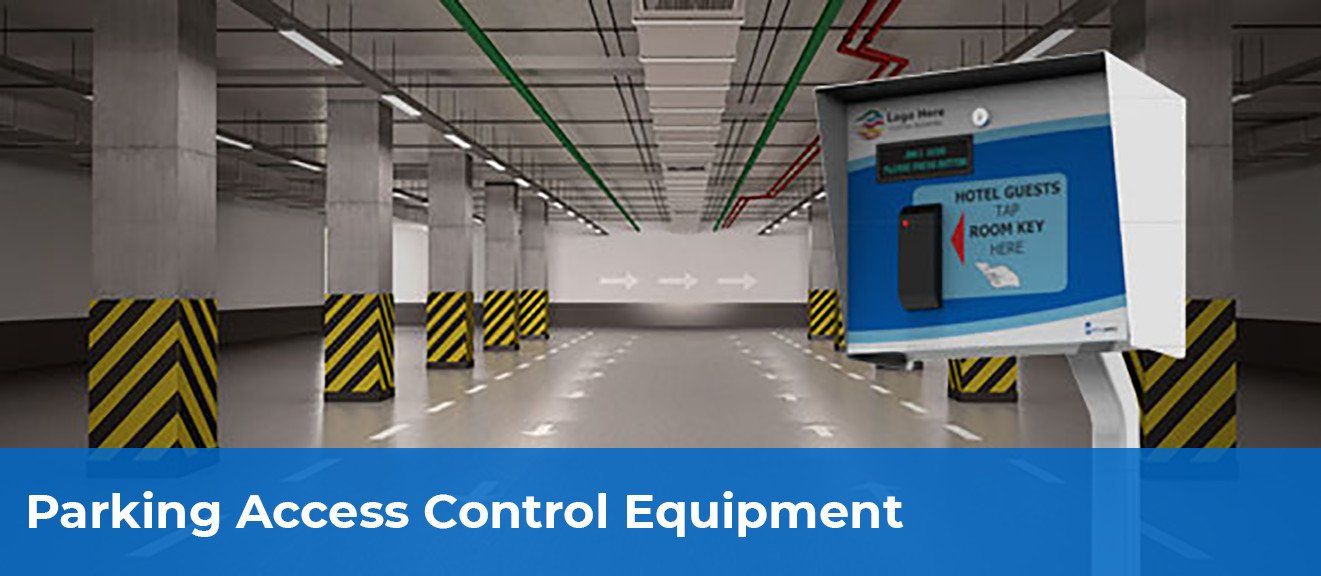
Whether your parking is public access or by authorized credential only, parking access control equipment is a smart choice. Gates are the most common type and can be added to entry lanes, exit lanes, or both, depending on where customers pay or present their credentials.
Entry and exit gates can be integrated with a ticket machine,or with parking payment machines. To open the gate, the customer must accept the time-stamped ticket, pay for parking or have their free pass or authorized credential validated.
Some facilities make use of one-way spike strips to control the direction of traffic into or out of a parking facility. These spikes puncture the tires of a vehicle entering in the wrong direction. As such, spike strips may only be advisable for barring entry to high security sites or for safety, to prevent collisions in one-way lanes.
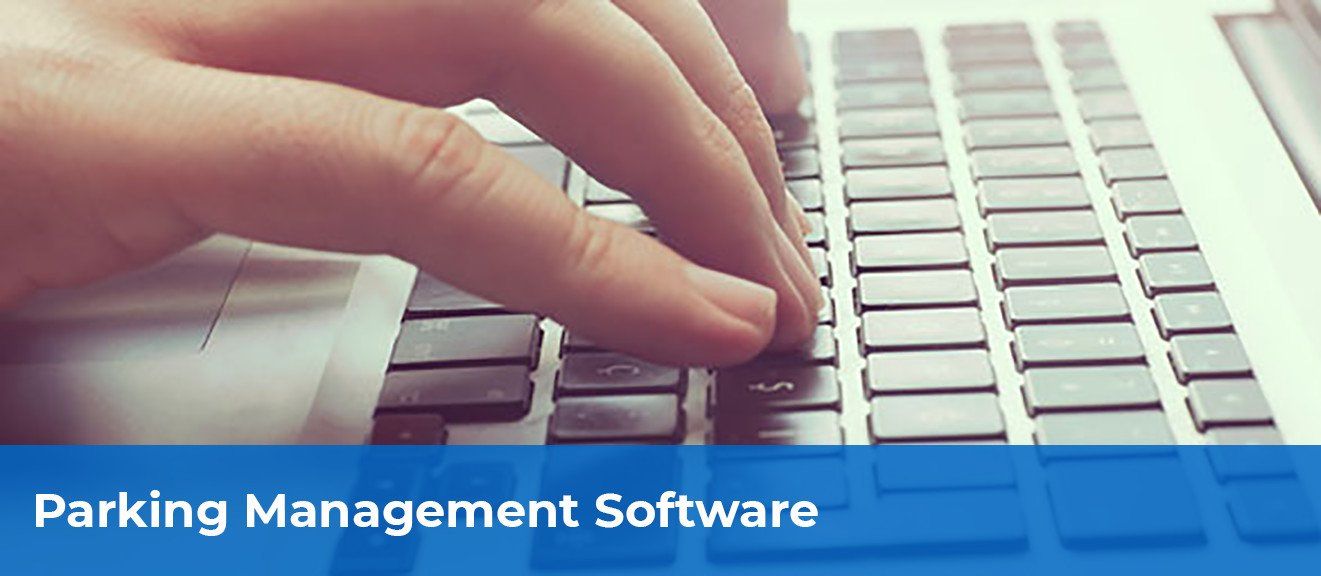
In the sections above, we’ve referred to several scenarios in which parking management software brings together an entire parking solution, allowing you to effectively manage all aspects of a parking system.
The essential features of parking management software allow you to set rates across the system, create parking passes and coupons, control and track access. Parking software can also manage the ‘inventory’ of available spaces, to display spaces available by lot, floor or area. (See Navigation and Aids section below.)
The parking management system should include sophisticated reporting tools, so you can create general manager reports, or segment data by ticket type, entry or exit, length of stay, date, rate, coupon, and payment method. Audit reports can also be generated to match the printed audits generated during cash collection at parking payment machines.
Parking management software includes modules and add-ons to facilitate full-featured card access, cloud-based management and highly-customized reporting.
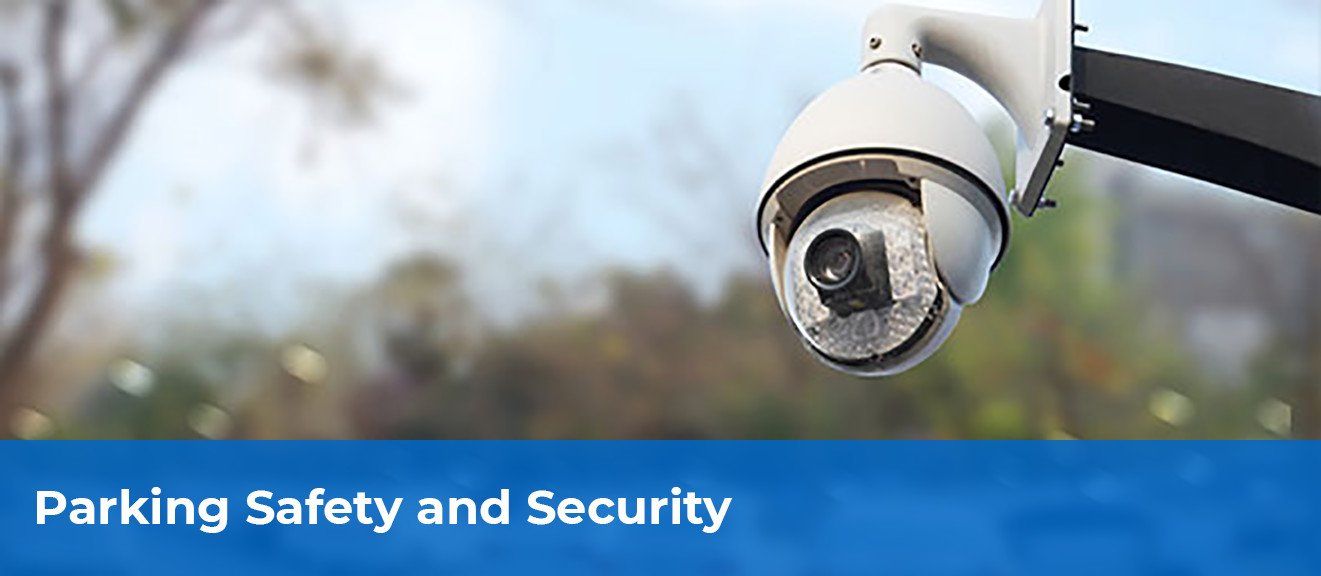
Parking safety and security solutions protect users from crime and help to protect the ownership or management from liability due to alleged events. Access control systems, such as those described above, certainly enhance security by regulating who enters and exits, but there are additional options for added safety.
On the low-tech end of the spectrum are bollards, which are concrete or steel pipes or pillars, placed as visible barriers in strategic areas of a parking facility. Bollards can be used to direct traffic and pedestrians and to provide high-impact protection from collisions (for example, to protect your Parking BOXX equipment investments).
Bollards should be used together with signage to direct the flow of traffic and alert drivers to take caution. For a higher-tech option, choose electronic signage integrated with your parking management software to provide dynamic messaging based on lot traffic, time of day, conditions or other factors.
Video monitoring can provide customers with an extra level of security, especially for large, unattended parking lots or those that are open late at night. Video monitoring can also protect parking lot operators by reducing liabilities from accidents in your lot, and by helping to reduce fraud.
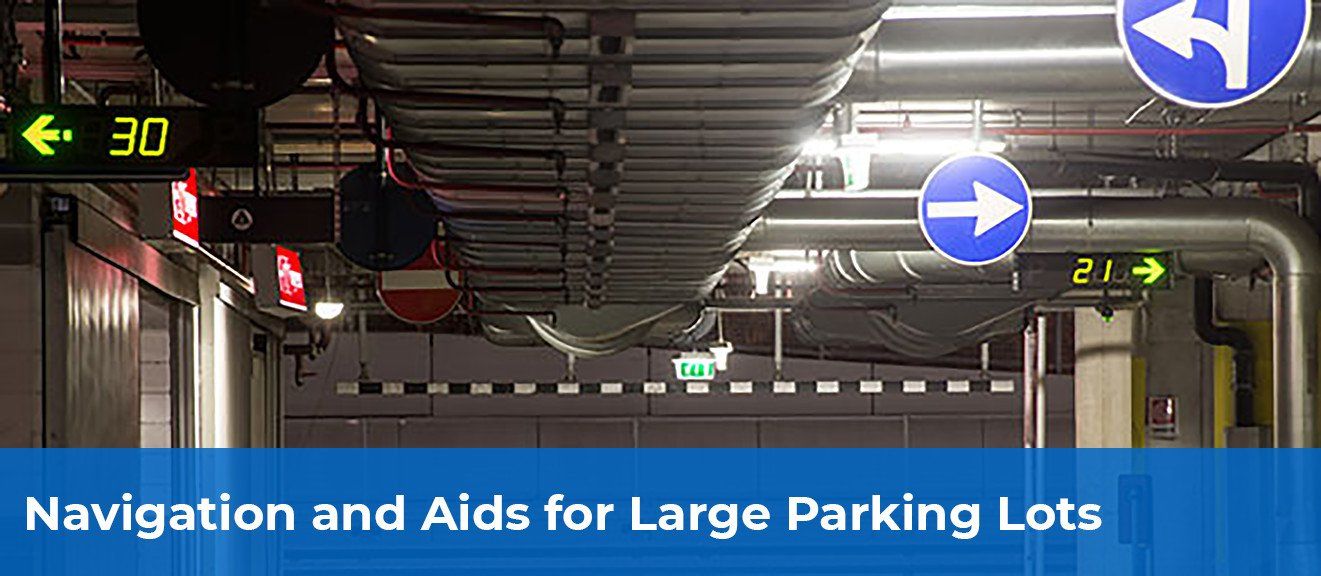
Whether you have a fully self-serve or an attended parking facility, parking customers will often need assistance navigating the lot or your parking solution.
For unattended parking systems, two-way parking system intercoms can be invaluable. Alone or together with video monitoring, you can quickly provide remote assistance to parking customers by voice.
In the sections above we’ve mentioned ‘space available’ counters and signage. These help drivers navigate to an open space in a large or multi-layer lot. Signage can be part of a sophisticated parking guidance and information system, that tracks available parking and provides customers with real-time information and direction to open spaces.
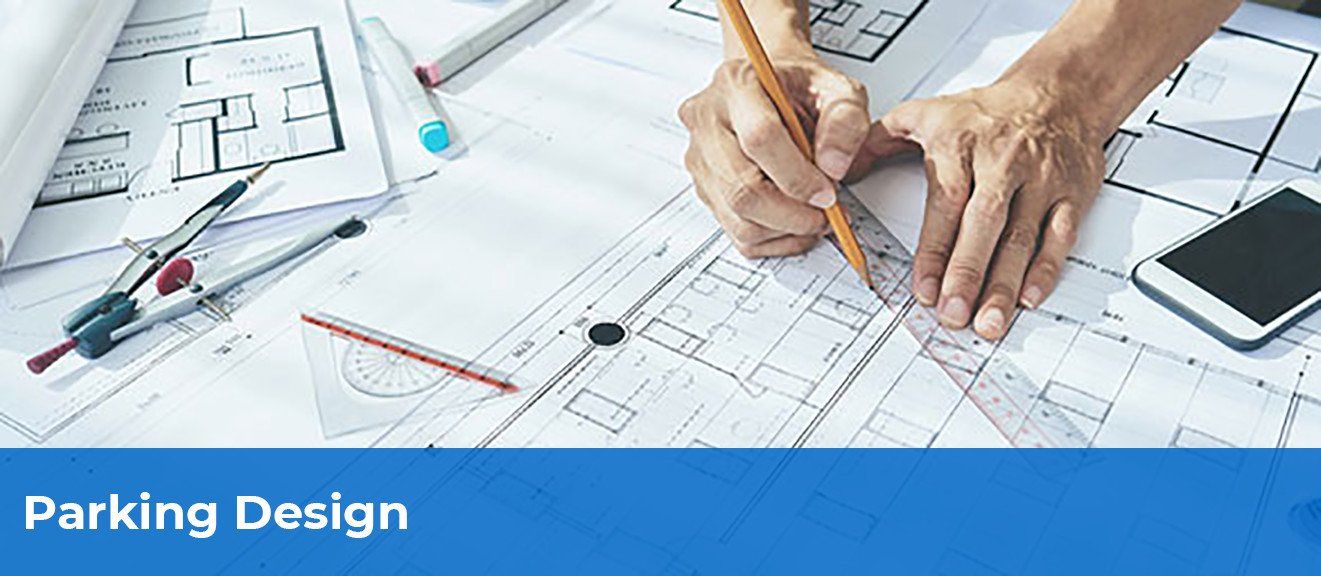
Larger facilities with complex and high-volume parking needs can look to specialized parking consultants for solutions.
Parking consultants provide expertise on the design and restoration of parking lots and parking structures, for example, multi-level parking lots. Design can involve functional analysis, engineering, architecture and landscaping. Parking consultants also have specialized knowledge on the operations, financial and technological aspects of running a parking facility.
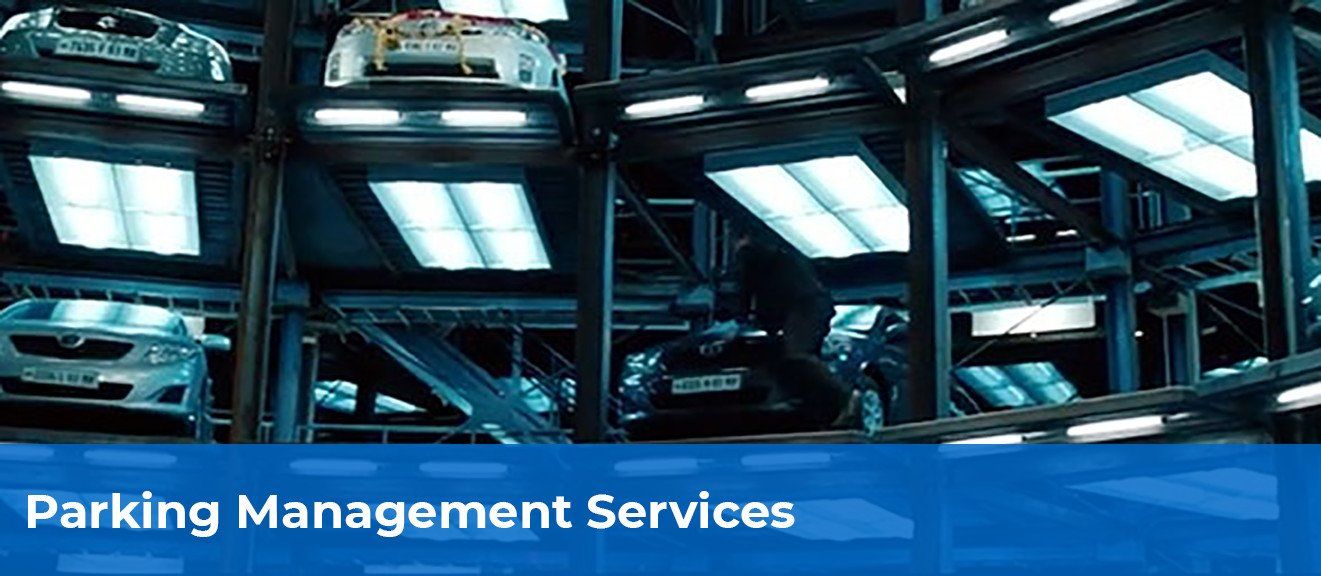
Parking lot owners who aren’t ready for a major build, but who want the space-maximizing benefits of multi-level parking may wish to consider vehicle stacking. These are mechanical solutions that operate like a lift, literally stacking vehicles and often increasing lot capacity by 300%. Vehicle stacking can be automated or semi-automated, and can be designed to work with a valet or allow customers to independently access their cars.
Some parking facility owners prefer to outsource or sub-contract the work of managing the parking operation. Parking management services typically collect a percentage of the parking fees to operate and manage the parking garage or lot . This can include staffing the lot with cashiers, attendants or even valets. Parking management services may work with your existing parking technology and equipment or may, as part of their contract, assume responsibility for introducing parking solutions.
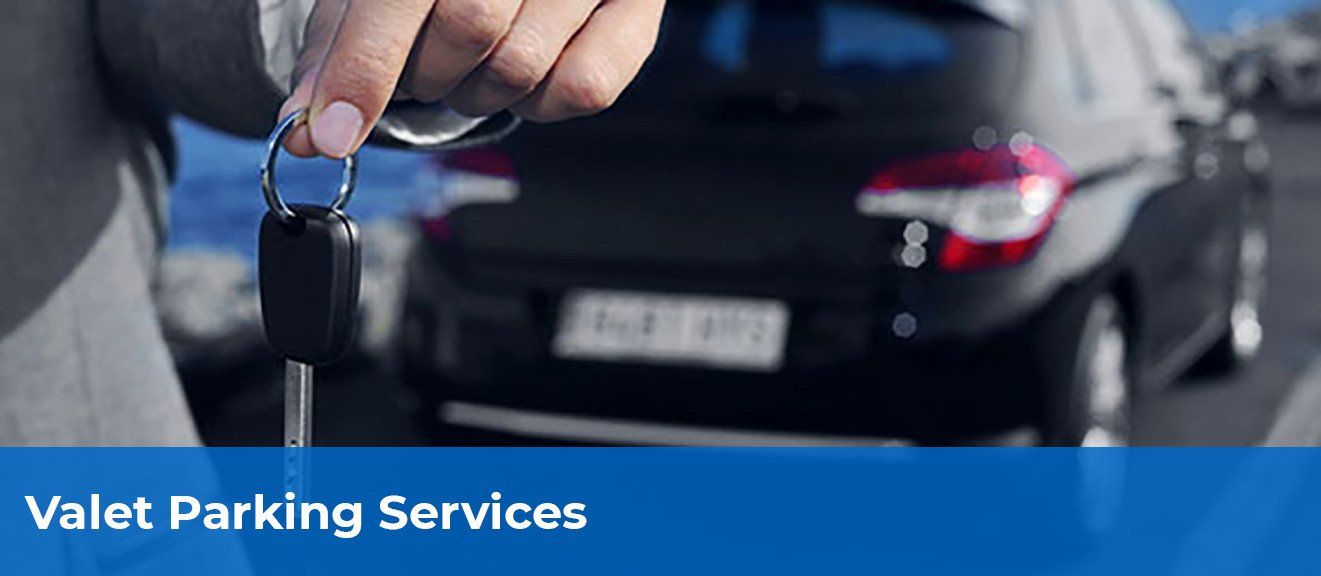
In closing, we’ll talk about a niche parking service: valet parking. Valet parking is a great option for hotels, higher-end restaurants and event venues. Here’s how it works:
- The parking customer drives to the valet drop off where an attendant gathers details, including the license number, vehicle make, color and any existing damage.
- The attendant prints off a ticket for the vehicle, provides it to the customer, and prints a tag for the keys.
- On exit, the parking customer pays at a valet kiosk and is given a receipt or a validated ticket to claim their car.
- Some apps allow the parking customer to request their vehicle in advance, so they don’t have to wait while the valet retrieves it.
Are We Missing Anything?
There you have it: the definitive guide to parking solutions. This has been a high-level but thorough look at the parking systems, equipment and software that allow owners to generate solid revenues from their parking operations.
We’ve looked at parking payment solutions, managing rates, controlling access, parking management software, safety and security, navigation and aids for large parking facilities, services for parking design, operations management and valet parking.
Tell us, are we missing anything? If you have unanswered questions about the parking industry, we’d love to hear them. Let us know!
$1,000 Parking Solutions Scholarship from
Parking BOXX
At Parking BOXX, we’re impressed by the creativity and drive of students. We’re inspired by their energy and by their commitment to achieving their goals. Most students are veteran technology users. Compared to prior generations, today’s students are experiencing parking solutions from a unique perspective. The aim of this scholarship is to encourage thinking about how to improve usability and efficiency of parking solutions for a new generation through technological innovation.
Parking BOXX offers a $1,000 scholarship to the student who suggests the most innovative, yet practical parking solution.
Our panel of business plan experts will judge the plan based on its originality, creativity, and persuasiveness.
Read all of the rules by clicking here before applying.New Paragraph
Enter the Parking Solutions Scholarship











